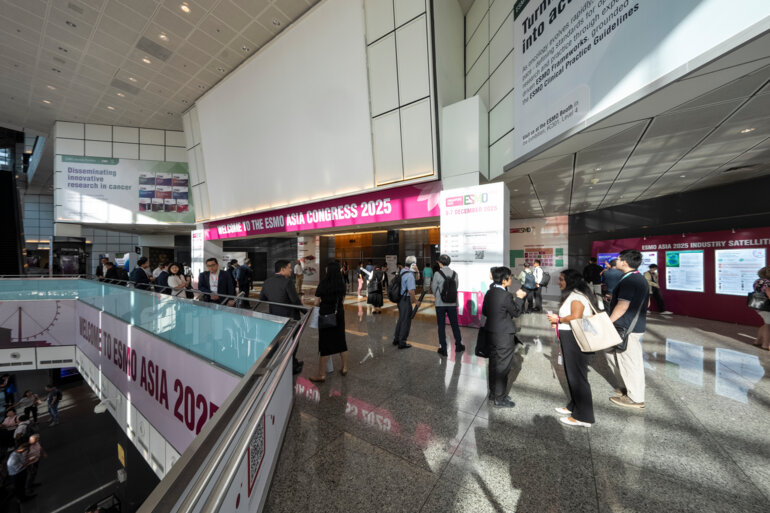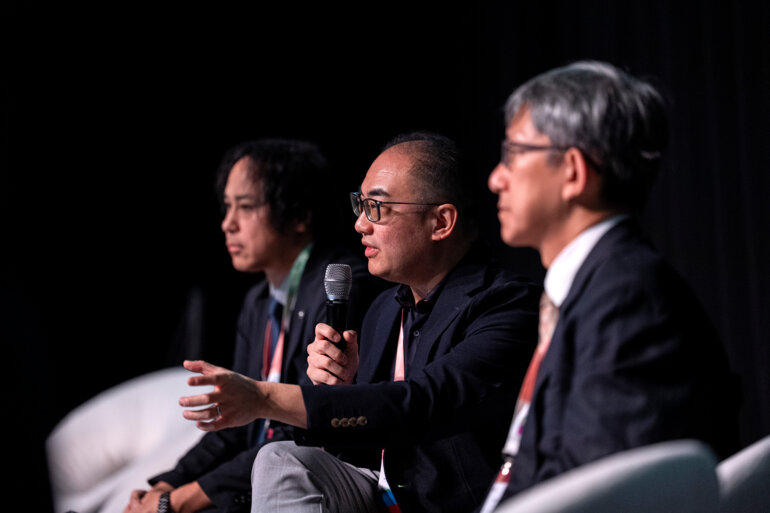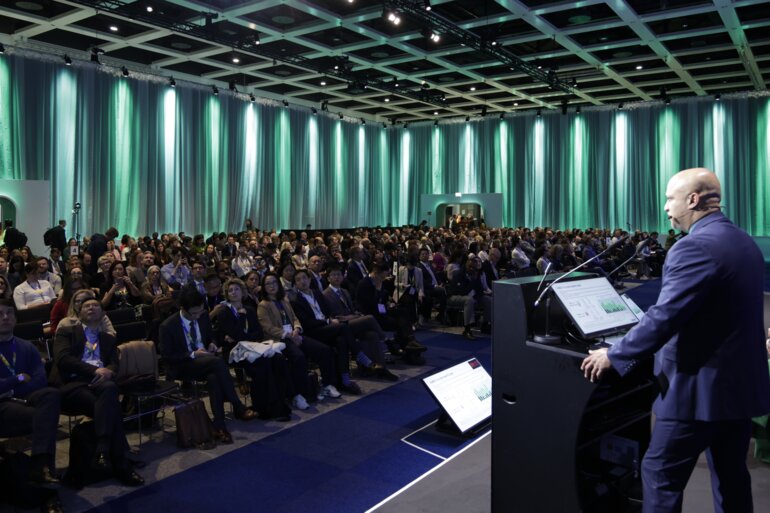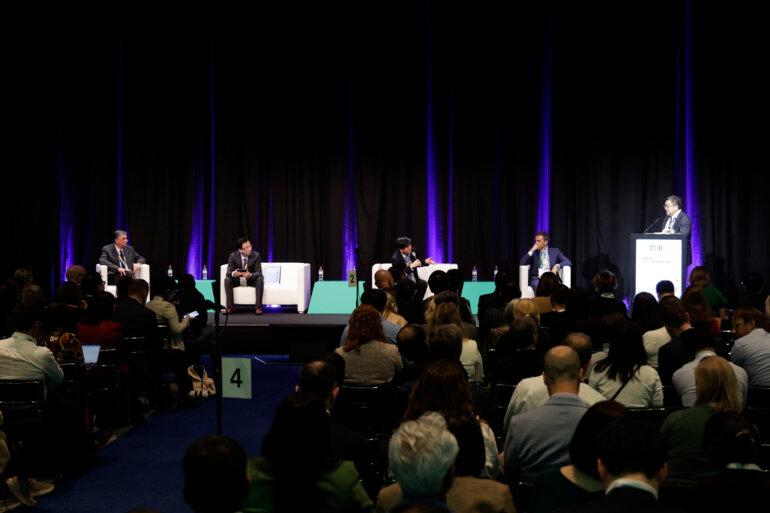Findings from latest research reflect emerging opportunities in oncology to refine treatments by challenging current paradigms of care
Personalising cancer treatment is not just about developing novel drugs, but also about refining how we use existing ones. The number of oncology treatments has expanded significantly in recent years, creating new challenges in how to identify patients who may truly benefit from therapies while limiting toxicities. However, technological advances in oncology, including wide access to next-generation sequencing (NGS), big data analysis and artificial intelligence (AI) tools, have come to guide both novel drug development and treatment personalisation.
This is evident in findings from several studies presented at the ESMO Congress 2025 (Berlin, 17–21 October 2025). In mesothelioma, for example, the integration of radiomics, genomics and transcriptomics using an AI-generated algorithm was shown to predict radiographic response to niraparib in the NERO trial (LBA106). In locally advanced non-small cell lung cancer (NSCLC), the combination of radiomic features and circulating tumour (ct) DNA levels predicted pathological complete response (pCR) and was also associated with event-free survival (EFS) in the double-blind, placebo-controlled AEGEAN study (LBA70). Also, a post-hoc analysis of the phase III CROWN study reported that in patients with metastatic ALK-positive NSCLC, early AI-derived brain metastasis response and lung radiomics enabled outcome estimation beyond RECIST (Abstract 2012P).
NGS has unlocked the potential of ctDNA analysis, enabling non-invasive detection of minimal residual disease and offering a dynamic tool for monitoring treatment response and risk of relapse. Two clinical trials presented at today’s Presidential Symposium explored the potential value of post-surgery ctDNA levels in optimising adjuvant treatment for colon and bladder cancers. The DYNAMIC-III study investigated the adaptation of adjuvant chemotherapy based on post-surgery ctDNA levels in stage III colon cancer. The study's findings indicate that recurrence-free survival at 3 years was not non-inferior with ctDNA-informed de-escalation versus standard management in ctDNA-negative patients after resection (LBA9). In the IMvigor011 phase III randomised trial, patients with muscle-invasive bladder cancer and no radiographic evidence of disease following cystectomy underwent serial ctDNA monitoring for up to 1 year after surgery. Patients who tested negative for ctDNA were observed without additional therapy, with 88% free of recurrence at 2 years. Those who tested positive were randomly assigned to receive atezolizumab or placebo. Significant benefits were observed in disease-free survival and overall survival in the atezolizumab treatment arm (LBA8).
Treatment optimisation requires revisiting treatment schemes that were validated in a clinical scenario that has changed profoundly with the implementation of new, active therapies. That is the case with platinum-based chemotherapy in advanced urothelial cancer. Traditionally, patients receive 6 cycles and this schedule has remained unchanged after avelumab became the standard of care (Ann Oncol. 2024;35:485–490). However, the phase II DISCUS study shows that 3 cycles of platinum-based chemotherapy followed by avelumab results in similar efficacy, but with a better quality of life for patients than the traditional scheme (LBA109). The first studies to investigate the benefit of docetaxel in metastatic hormone-sensitive prostate cancer used the same regimen as in castration-resistant disease (75 mg/m2 every 21days for 6 cycles), which was later adapted in the studies that addressed the combination of docetaxel plus androgen receptor pathway inhibitors (ARPI). Also presented at the Congress, the ARASAFE trial has demonstrated that in this scenario, a modified scheme of docetaxel at 50 mg/m2 every 15 days significantly reduced the occurrence of grade 3–5 adverse events (LBA92).
Today, treatment optimisation is not just a theoretical exercise – it is a clinical imperative. By tailoring regimens to minimise harm without compromising efficacy, we uphold the highest standards of care. As we have seen at this ESMO Congress, it is only by embracing technology-driven adaptive strategies that we as medical oncologists can truly challenge static paradigms and reflect the complexity of modern oncology for the benefit of our patients.
Programme details:
Fennell DA, et al. 3D-response and multiomic correlates of niraparib in relapsed mesothelioma: NERO, a randomised clinical trial in patients with relapsed mesothelioma. ESMO Congress 2025 - LBA106
Heymach J, et al. Association of radiomic features ± on-treatment ctDNA detection with treatment outcomes in patients with resectable NSCLC: Exploratory analyses from AEGEAN. ESMO Congress 2025 - LBA70
Lu SL, et al. A post-hoc analysis of the CROWN study in ALK+ NSCLC using AI to predict progression-free survival based on early response. ESMO Congress 2025 - Abstract 2012P
Tie J, et al. ctDNA-guided adjuvant chemotherapy de-escalation in stage III colon cancer: Primary analysis of the ctDNA-negative cohort from the randomized AGITG DYNAMIC-III trial (Intergroup study of AGITG and CCTG). ESMO Congress 2025 - LBA9
Powles TB, et al. IMvigor011: A phase III trial of circulating tumour (ct)DNA-guided adjuvant atezolizumab vs placebo in muscle-invasive bladder cancer. ESMO Congress 2025 - LBA8
Grande E, et al. DISCUS: A phase II study comparing 3 vs 6 cycles of platinum-based chemotherapy prior to maintenance avelumab in advanced urothelial cancer. ESMO Congress 2025 - LBA109
Grimm MO, et al. 3-weekly docetaxel 75 mg/m2 vs 2-weekly docetaxel 50 mg/m2 in combination with darolutamide + ADT in patients with mHSPC: Results from the randomised phase III ARASAFE trial. ESMO Congress 2025 - LBA92







